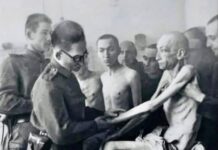Although men have generally dominated philosophical discourse, women have been philosophers throughout the history of the discipline.
Most female philosophers lived their lives focusing upon resolving existential questions about the human condition.
READ ALSO: Lexie Alford, 22, youngest lady to travel around the world
Most of them contributed to the branches of philosophy, such as aesthetics, ethics, epistemology, philosophy of science, logic, metaphysics, social theory, philosophy of religion, and political philosophy.
According to Wikipedia, some female philosophers were accepted during the medieval and modern eras, but none became part of the Western canon until the 20th and 21st century.
Women also shaped the development of philosophy. Although most of their writings were not seen, their verbal teachings made a significant impact on their contemporaries.
More than two millennia later, intelligent, verbal women still struggle to have their own voices heard.
Here are a few lists out of the many female philosophers both from the ancient, medieval and contemporary who contributed to philosophy.
Hypatia of Alexandria

Most famous for her dramatic death at the hands of a Christian mob, Hypatia (circa 355–415 CE) was a Neoplatonic teacher admired for her mathematical and astronomical works.
One of her successful students, the Christian bishop Synesius, wrote glowing letters to her, exchanging information not only about philosophy but also about obscure mathematical instruments.
She edited her father’s Theon astronomical commentary, which he acknowledged at publication.
She is known to have written a commentary on Diophantus’s thirteen-volume Arithmetica, which may survive in part, having been interpolated into Diophantus’s original text, and another commentary on Apollonius of Perga’s treatise on conic sections, which has not survived.
Recalling the wisdom of ancient women both expands our view of history and reminds us of the gendered elements of modern complex thought.
This is particularly true in the field of philosophy, which consistently rates as one of the most gender-imbalanced in the humanities in modern universities.
The ancient world found space to include women’s voices in philosophy, and so must we.
Aspasia of Miletus

Aspasia of Miletus (most active around 400 BCE) was the most famous woman in Classical Athens — or should we say infamous? Although a foreigner, she became the mistress of Pericles, the leader of Athens at the beginning of the Peloponnesian War.
She was not only remembered for her captivating beauty, but also for her captivating mind. Socrates himself called Aspasia his teacher and relates he learned from her how to construct persuasive speeches. After all, he tells us, she wrote them for Pericles.
She plays a verbal role in at least three philosophical dialogues written by students of Socrates: Plato’s Menexenus and the fragmentary Aspasia dialogues by Aeschines and Antisthenes.
Themistoclea

Clea (most active around 100 CE) was a priestess at Delphi — a highly esteemed political and intellectual role in the ancient world. The religious practitioners at the shrine received frequent requests from world leaders for divine advice about political matters. Clea was part of this political-religious system, but she believed in the primary importance of philosophy.
She found many opportunities for in-depth philosophical conversations with Plutarch, the most famous intellectual of his time. Plutarch tells us in the prefaces to On the Bravery of Women and On Isis and Osiris how these invigorating conversations on death, virtue and religious history inspired his own work.
Thecla

When she first appears on the scene in the Acts of Paul and Thecla, Thecla (most active around 1st century CE) is leading a normal middle-class life, sequestered at home and about to make an advantageous marriage. But leaning out of her balcony, she hears the dynamic preaching of Paul and decides on a radically different path.
She follows Paul around, resists a variety of amorous advances and survives being thrown to carnivorous seals in the arena. Finally, she is confirmed as a teacher in her own right and begins an illustrious career. Although it’s been speculated Thecla never really existed, her legend inspired many women to pursue a life of philosophy.
Some 250 years later, Methodius of Olympus wrote a philosophical dialogue full of women, with Thecla as the star participant, and Macrina was given a family nickname of Thecla, inspired by her philosophical and religious mission.
Sosipatra

Sosipatra (most active around 4th century CE) lived the dream: she had a successful teaching career along with content family life. After an education in mysticism by foreigners, Sosipatra became a respected teacher in the Neoplatonic tradition, interpreting difficult texts and mediating divine knowledge.
She was surrounded by male experts, one of whom was her husband Eustathius. But according to Eunapius’ biography in his Lives of the Philosophers, her fame was greater than any of theirs, and students far preferred her inspiring teaching.
Macrina the Younger (circa 330-379 CE)

Macrina was the oldest of ten in an expansive, influential well-educated Christian family in Cappadocia.
She kept the family together through her sharp mind, devout soul and strong will, ultimately transforming her ancestral estate into a successful community of male and female ascetics.
Her brother, Gregory of Nyssa, commemorated her wisdom both in a biography Life of Macrina and also in a philosophical dialogue On the Soul and Resurrection.
The latter depicted a conversation about death between the siblings as Macrina lay dying, in which she displays wide knowledge in philosophy, scripture and the physical sciences.
Diotima of Mantinea (around 350-380 BC)

Historians know very little about Diotima, but her words and ideas were preserved in Plato’s Symposium, his great treatise on the nature of love.
According to her, people can express love through reproduction both literally and metaphorically — through reproducing to have children, or by sharing their ideas and making themselves immortal that way. Essentially, love is part of the drive to be immortal, in body and in mind.
Heloise d’Argenteuil (1090-1164)

Heloise, a philosopher who eventually became a nun, is probably most well known for her tragic love affair with Peter Abelard, but she was famous in her own time for her intellect and was a very early believer in a fairly radical feminist philosophy.
Abelard and Heloise carried out an illicit affair for many years before getting married, something Heloise never wanted. Their relationship eventually became problematic enough for him to become a monk, and she a nun.
Her ideas about marriage — that it is essentially contractual prostitution — and her complete rejection of traditional femininity would make her stand out even today. Although she eventually ended up in a confined, convent life, in her own words she ‘preferred love to wedlock, freedom to a bond.’ How’s that for inspiring?
Tullia d’Aragona (1501/1505 – March or April 1556)

Tullia d’Aragona, was an Italian poet, author and philosopher. Born in Rome sometime between 1501 and 1505, Tullia travelled throughout Venice, Ferrara, Siena, and Florence before returning to Rome.
Throughout her life, Tullia was esteemed as one of the best female writers, poets, philosophers, and charmers of her time. Influencing many of the most famous male philosophers, Tullia’s work raised the status (in literature) of women to be on an equal footing as men.
Her fame and success made her the most celebrated Renaissance poet-courtesans. With her intellect, literary abilities and social graces, she entertained powerful men and famous poets.
Laura Bassi (1711-1778)

Bassi was a true trailblazer both for natural philosophy and for women in academia as a whole. In 1732, when she was only 21, she received her doctorate from the University of Bologna — at the time the second woman ever to receive a doctorate from a European university.
She became a professor of anatomy upon graduating, and then a year later received the chair of philosophy. She primarily occupied herself with physics, and she was on the cutting edge of science at the time, dealing with Newtonian physics and Franklinian electricity before the Italian universities even taught them.
She wrote much more than she published, but her teachings played a key role in importing Newton’s ideas about natural philosophy and expanding on them in her own ways.
George Eliot (1819-1880)

Mary Ann Evans, the woman behind the pen name George Eliot, is most famous for the seven novels that she wrote, including Silas Marner and Middlemarch. However, much of her work and focus contained a heavy moral bent.
Early in her life, her family invested in her education because they assumed that she would be too ugly to marry well; later on, she became infamous for a scandalous public affair conducted with a married man, even as she was one of the most well-respected writers of her time. She was influenced by various philosophies that she worked with closely, including Rationalism and Baruch Spinoza’s work on ethics.
Catherine of Siena (25 March 1347 – 29 April 1380)

Catherine of Siena, a lay member of the Dominican Order, was a mystic, activist, and author who had a great influence on Italian literature and the Catholic Church. Canonized in 1461, she was also a Doctor of the Church.
She was born and raised in Siena, and at an early age wanted to devote herself to God, against the will of her parents. She joined the “mantellate,” a group of pious women, primarily widows, informally devoted to Dominican spirituality. Her influence with Pope Gregory XI played a role in his decision to leave Avignon for Rome. She was then sent by him to negotiate peace with Florence.
After Gregory XI’s death and peace concluded, she returned to Siena. She dictated to secretaries her set of spiritual treatises The Dialogue of Divine Providence. The Great Schism of the West led Catherine of Siena to go to Rome with the pope.
She sent numerous letters to princes and cardinals to promote obedience to Pope Urban VI and defend what she calls the “vessel of the Church.” She died on 29 April 1380, exhausted by her penances.
Margaret Fuller (May 23, 1810 – July 19, 1850)

Sarah Margaret Fuller Ossoli was an American journalist, editor, critic, translator, and women’s rights advocate associated with the American transcendentalism movement.
She was the first American female war correspondent, writing for Horace Greeley’s New-York Tribune, and full-time book reviewer in journalism.
Her book Woman in the Nineteenth Century is considered the first major feminist work in the United States.
Born Sarah Margaret Fuller in Cambridge, Massachusetts, she was given a substantial early education by her father, Timothy Fuller, who died in 1835 due to cholera.
She later had more formal schooling and became a teacher before, in 1839, she began overseeing her Conversations series: classes for women meant to compensate for their lack of access to higher education.
Fuller became the first editor of the transcendentalist journal The Dial in 1840, which was the year her writing career started to succeed, before joining the staff of the New York Tribune under Horace Greeley in 1844.
By the time she was in her 30s, Fuller had earned a reputation as the best-read person in New England, male or female, and became the first woman allowed to use the library at Harvard College.
Her seminal work, Woman in the Nineteenth Century, was published in 1845. A year later, she was sent to Europe for the Tribune as its first female correspondent. She soon became involved with the revolutions in Italy and allied herself with Giuseppe Mazzini.
She had a relationship with Giovanni Ossoli, with whom she had a child. All three members of the family died in a shipwreck off Fire Island, New York, as they were travelling to the United States in 1850. Fuller’s body was never recovered.
Fuller was an advocate of women’s rights and, in particular, women’s education and the right to employment. She revolted against Boston-Cambridge’s learned professions because she was barred from entering as a girl.
Follow the Neptune Prime channel on WhatsApp:
Do you have breaking news, interview request, opinion, suggestion, or want your event covered? Email us at neptuneprime2233@gmail.com





